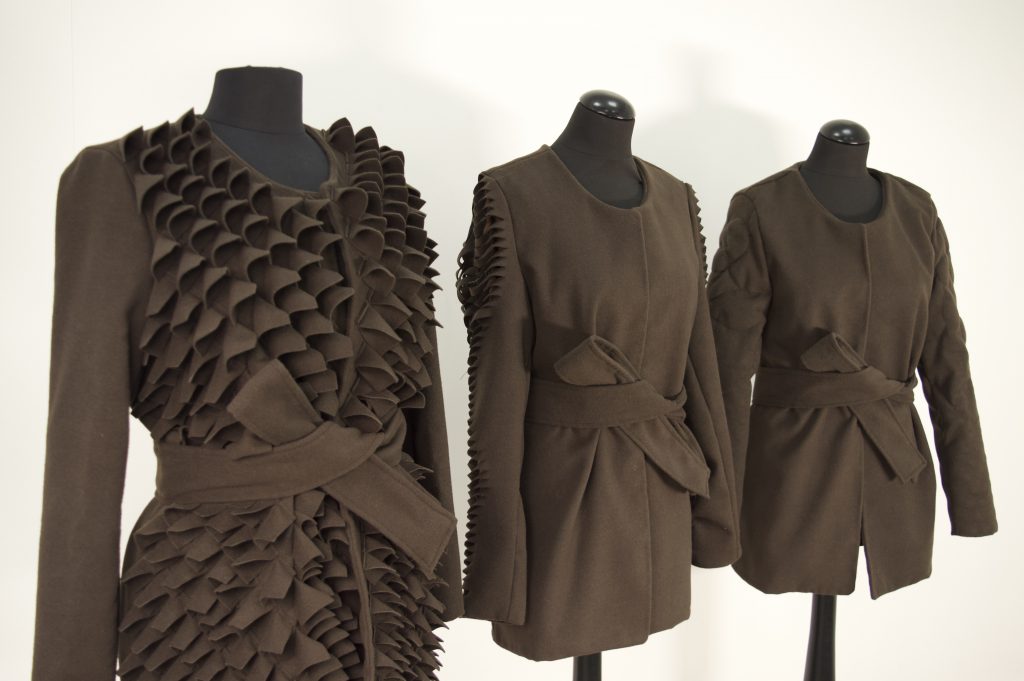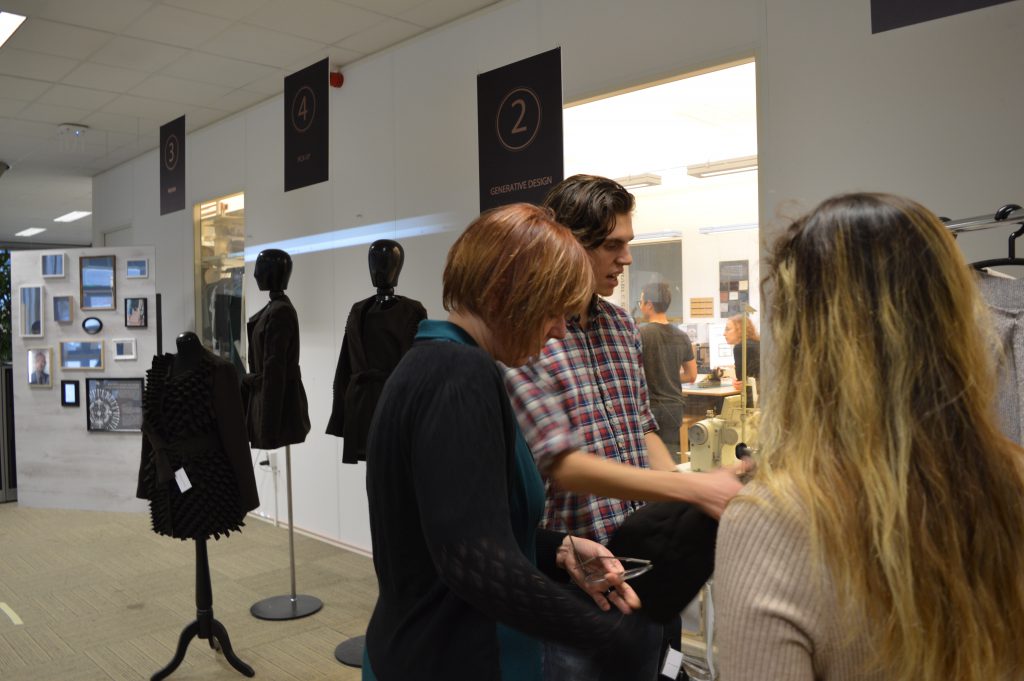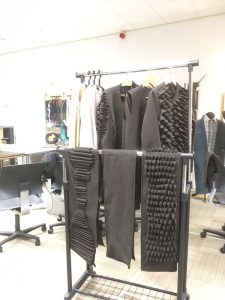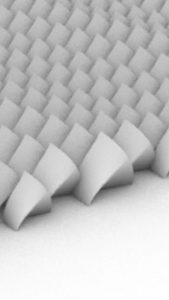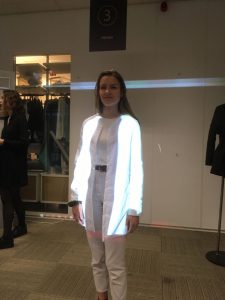
MŌ
Customization of Tactility in Garments, a Proposed New Shopping Experience
Design Project Everyday Soft Things | User-centred/ user experience Design,
ultra-personalization, Generative Design
Team: Ahmad Issa, Jing-cai Liu, Laura Maron, Tijmen Kervers, Julia van Zilt
Background
Customization and personalization are current trends in the fashion industry, they are caused by changes in customers’ purchase behavior and in technological innovations[1]. Retailers and prominent fashion brands promise user integrated designs and production processes that fit the customer’s needs. This strategy delivers highly flexible, individualized products for consumers, in this process they effectively become co-designers. Consequently, many companies have started investing in this strategy by enabling customers to alter designs on the retailers’ websites. Customization and personalization of fashion items are likely to become a significant market in the future; therefore, retailers and fashion companies are improving these customization experiences to increase profitability.
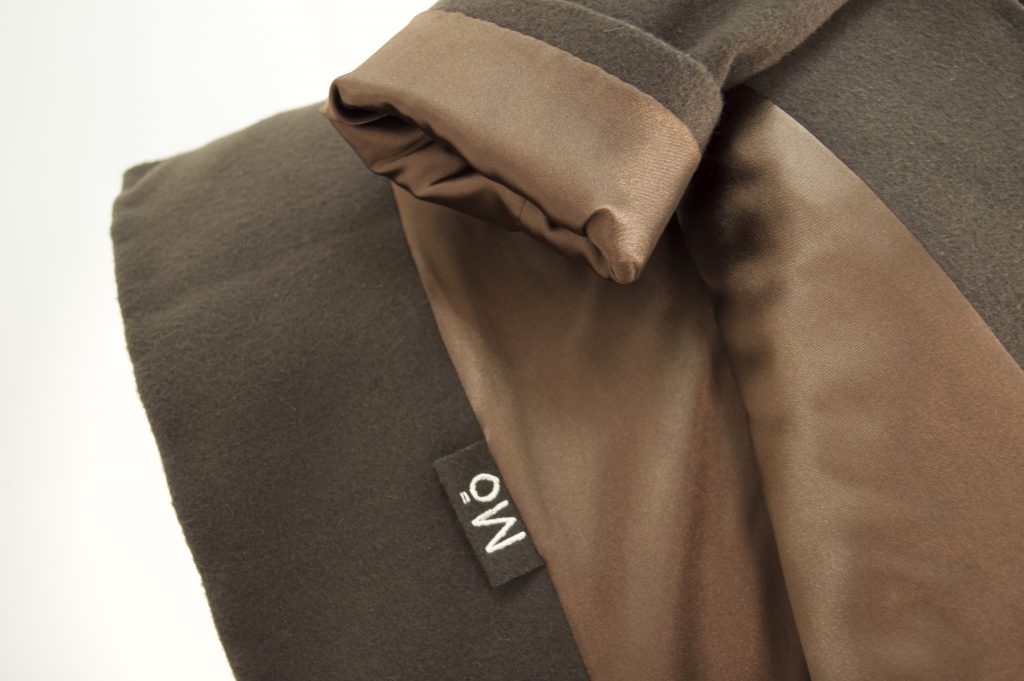
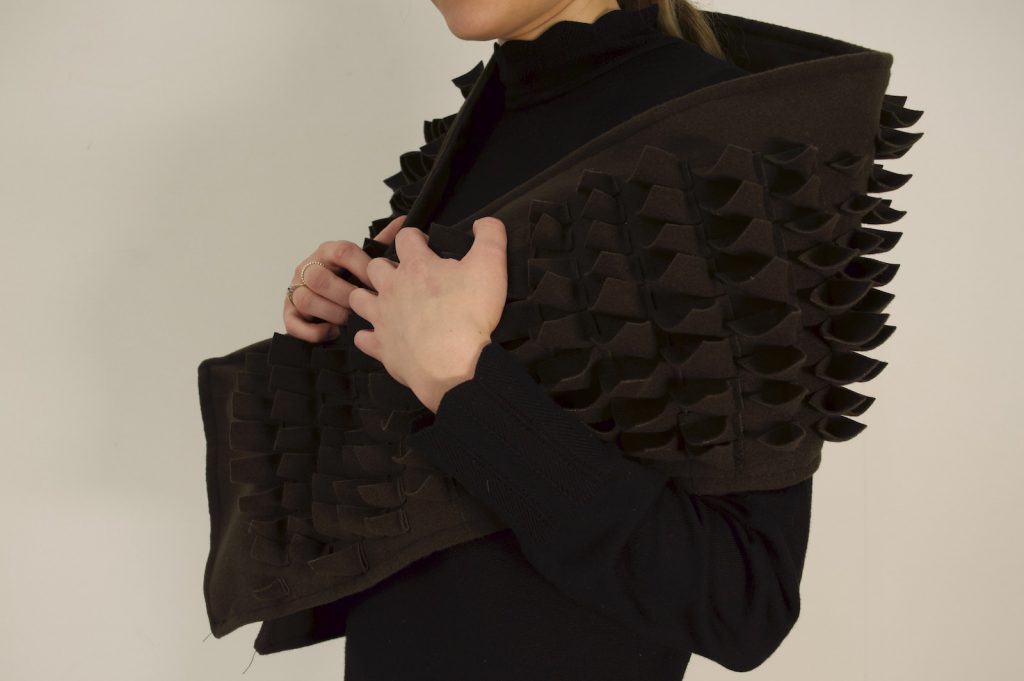
The Hypothetical Design
With this project, we present a hypothetical future shopping experience in which the user creates their garment by designing their own tactile experience. Our system consists of four steps: In the first step, the user chooses the fabric and tactility of their liking. In the second step, a 3D scan of the user is made which will be used for pattern and model generation. In the third step, the user can have their choices projected onto their body to get a preview of their coat. The fourth and final step is then trying on and picking up their final garment in the shop. We believe this personalization of tactility could enhance the customer’s appreciation of the garment and therefore satisfaction throughout, and longevity of the garment’s lifecycle.
1. The tactile library which will serve as the first input to integrate the customer’s tactility preferences by choosing a material and a texture.
2. In the body scan stage, a 3D-scan of the user is made, from this scan the system takes their measurements which are used to create the patterns for a tailored garment.
3. During the preview stage the system presents the preliminary outcome of the garment by projecting it onto the user, in this stage adjustments to the design can still be made.
4. The final product will then be made exactly to the customer’s specifications. A garment is made using the fabric and color chosen by the user, tailored to the user and embellished with their chosen texture.
